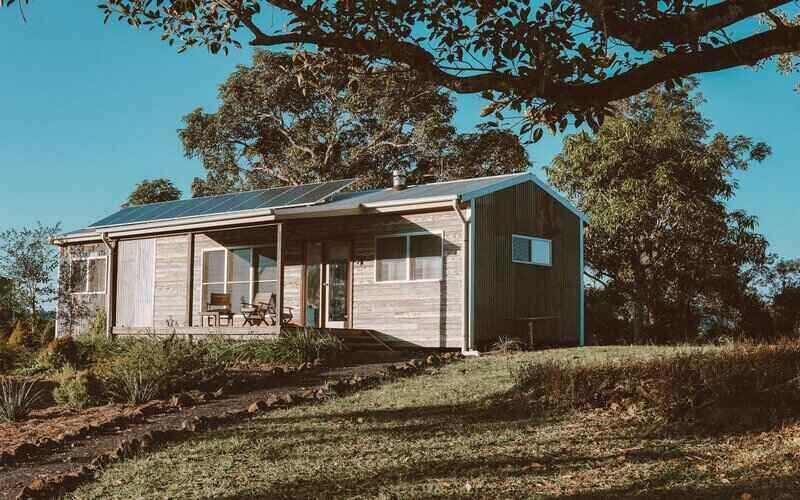These include allowing some first home buyers to access their super, phasing out stamp duty and easing the stress tests banks use to assess borrowers.
Persistently low supply continues to characterise the Australian housing market in 2023.
The number of new capital city listings in June was nearly 10% lower than the previous five year average, while low vacancy rates continue to drive up the price of rent.
Various policies to address the problems have been put forward in recent months, including capping rental increases, as well as several measures in May's budget that aimed to stimulate residential construction activity, which is also well below normal levels.
However, Mr Pressley has been an outspoken critic of limiting rental increases, and says the problems have nothing to do with Australia's ability to build houses.
"Official statistics confirm that the nation’s total housing increased by 1.8 million over the decade, 460,000 more than underlying demand requires," Mr Pressley said.
He says the real solution is to remove 'grit from the system' that impacts people's ability to buy and sell properties, and criticised the archaic policies that govern housing in Australia.
Mr Pressley points out 50% of properties purchased each year are existing owner occupiers who swap homes, so his suggestions are geared towards increasing these transactions, as well as encouraging people to buy investment properties.
"Mobility barriers created by archaic policies produces insufficient supply of established homes, which represents 98% of what buyers want. And there will never be enough supply of rental accommodation if investors aren’t supported," Mr Pressley said.
He shared in depth explanations for two of his suggestions with Savings.com.au.

Simon Pressley is head of research at Propertyology.
Allow first home buyers to dip into superannuation
Mr Pressley says one of the biggest hurdles for first home buyers is saving for a deposit, so suggests allowing first home buyers who have already saved at least 50% of the deposit amount to withdraw up to $50,000 from their super to buy the property sooner.
"Granting someone in their thirties access to a portion of their superannuation on the strict basis that it is used as a deposit on their first home, an appreciating asset, could mean they get their foot on the property ladder ten years earlier," Mr Pressley told Savings.com.au.
Making it easier for first home buyers to enter the property market means they are removed from the rental pool, which would ease high rental demand.
It could also put upward pressure on housing prices, which many expect to decrease with buyers purchasing power curbed by the high cost of borrowing.
Low levels of properties for sale in 2023 followed a significant drop off in prices during the back half of 2022, leading some analysts to conclude there are many Australians who may otherwise have sold this year holding off until prices regather steam.
Property prices remain well below the same time last year, and the recent rally has been attributed to this low supply rather than a surge in demand.
More activity in the property market means more properties up for sale.
Adjusted risk assessment and unlimited interest only terms
Mr Pressley also advocates APRA reducing its serviceability buffer from 3% to 2%.
Since May, Westpac, CBA and NAB have all announced new risk assessments which allow certain borrowers with strong credit who don't pass the 3% risk assessment to refinance anyway.
APRA has made it clear it will not be reducing the buffer, and banks should be very careful applying these exceptions.
Mr Pressley feels lowering the buffer is another way to increase mobility in the property market, and he also suggested a stress test of just 1.5% for borrowers with a primary place of residence and at least two investment properties.
"Countless applications for investment credit which should be approved get declined and the pressure on the rental market unnecessarily continues," Mr Pressley told Savings.com.au.
"The RBA already confirm that credit to investors is of a higher quality than owner-occupied credit. Most investors are on everyday Aussie incomes, but the choices that they make with their income and their goal-orientated mindset is reflected in the quality of their credit application."
His other suggestion was to allow unlimited interest-only terms, which are usually only allowed for up to five years at the moment.
He says that if a credit assessor feels an interest only application is an acceptable risk, that isn't likely to change five years later.
"On the law of averages, in five years’ time the rental income will be higher, ditto the borrower’s personal salary, and the value of the property asset has increased," he said.
Simon Pressley's other ideas
- Phase out stamp duty by 2028
- Allow 45 year home loan terms
- Introduce balloon payments for home loans
- Increase accountability for providers of social housing
Photo by Elle Hughes on Pexels

Ready, Set, Buy!
Learn everything you need to know about buying property – from choosing the right property and home loan, to the purchasing process, tips to save money and more!
With bonus Q&A sheet and Crossword!

